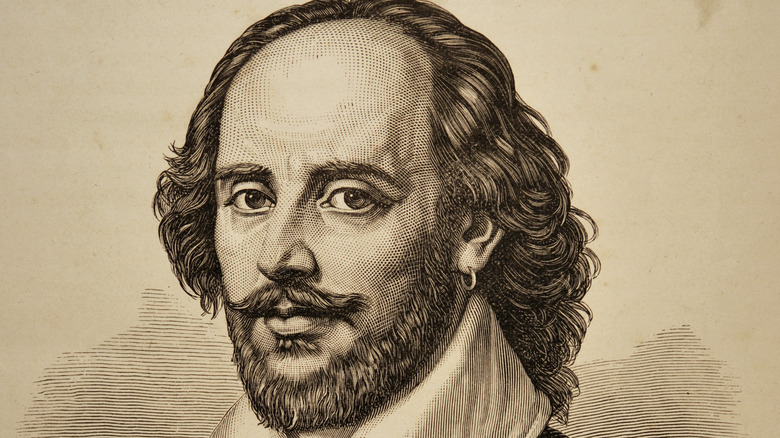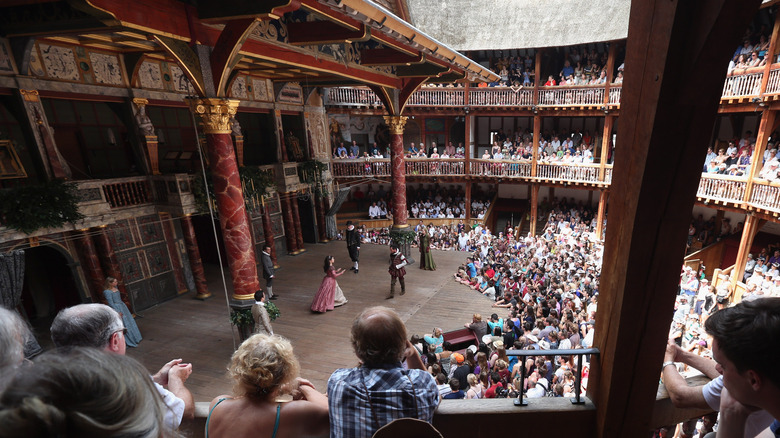Here's How Shakespeare's Globe Theatre Was Destroyed
Legendary playwright William Shakespeare saw his dreams go up in smoke during a performance at London's Globe Theatre on June 29, 1613 (via the Shakespeare Birthplace Trust). Around this time, he was on a creative winning streak and enjoyed the favor of King James. In fact, some of Shakespeare's plays were even performed as part of the celebrations for the wedding of King James' daughter, according to History Extra.
Shakespeare, along with fellow playwright John Fletcher, had been working on a play called "All is True," which is now known as "Henry VIII." The show only had a few performances before disaster struck. On June 29, a packed audience turned out to see this historical play based on the divorce of King Henry VIII and Catherine of Aragon. The crowd was so immersed in the drama that they failed to notice the start of the fire. A piece of material from a cannon fired to announce the arrival of the king near the end of Act One landed on the theater's thatched roof. The fire quickly spread, and the hot, dry conditions of the day only made the situation worse. Within an hour of the start of the fire, the Globe burned completely to the ground.
A cannon fired to greet the king caused the blaze
It appears to be some type of miracle that no one died in the Globe fire, especially considering that it was an open-air theater that held 1,000 patrons in the balconies and another 2,000 people standing by the stage (via History). According to History Extra, one theatergoer "had his breeches set on fire, that would have perhaps broyled him, if he had no by the benefit of a provident wit, put it out with a bottle of ale."
The complete destruction of the Globe left Shakespeare and his backers in a bad financial situation. They had to pay to rebuild the theater, and suffered the loss of income during construction. Shakespeare had the Blackfriars theater nearby, but it was much smaller than the Globe, holding only 700 playgoers. It took a year for the new Globe to be built, and they clearly learned their lesson from the previous disaster. The new theater had a tile roof that was supposed to be fireproof, according to History Extra.
Around 1644, this new and improved Globe Theatre was destroyed and the land was sold for development (via the Shakespeare Birthplace Trust). Actor and director Samuel Wanamaker launched an effort to recreate the Globe in 1970 as a tribute to Shakespeare. The replica of the famed theater opened in 1997, located only a street away from the original theater's site.

